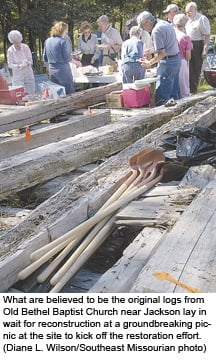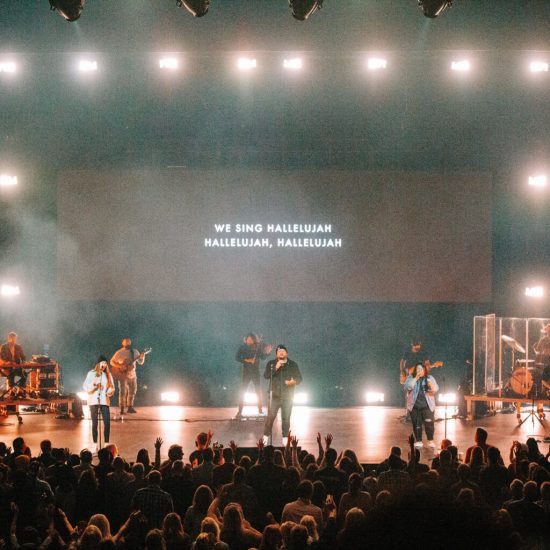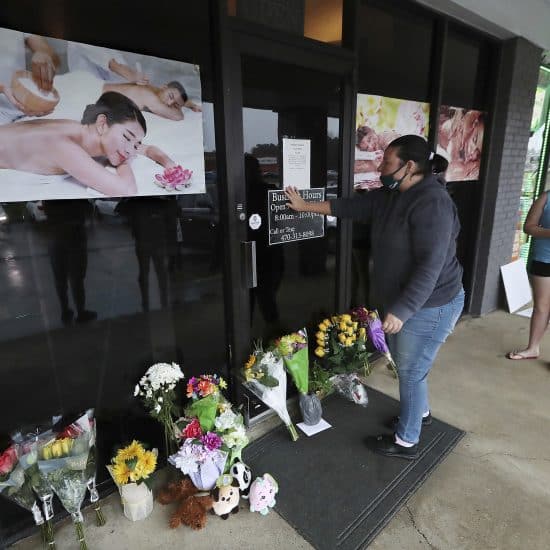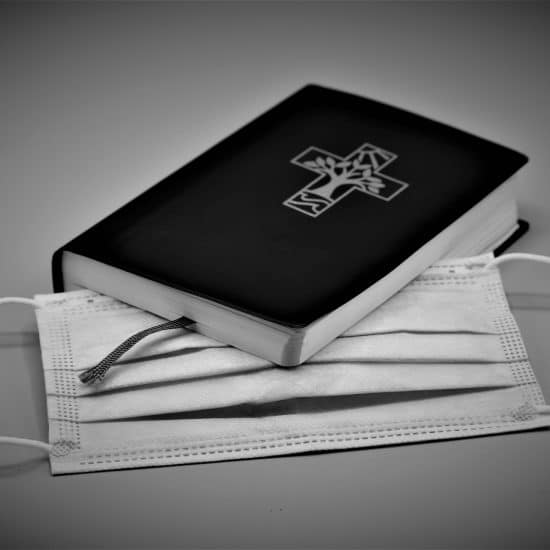By Jacquelyn Huffman, Word&Way Correspondent
A priority for Missouri Baptist historians may be  realized by year's end as plans for the reconstruction of the first Protestant church west of the Mississippi River move forward.
realized by year's end as plans for the reconstruction of the first Protestant church west of the Mississippi River move forward.
A groundbreaking ceremony at the Old Bethel Baptist Church site in October marked a fundraising push and the beginning of the reconstruction process. Plans call for restoration by the time the Missouri Baptist Convention hosts its annual meeting Oct. 30-Nov. 1 in Cape Girardeau.
Although the church's ministry lasted less than 100 years, it marked the beginning of Protestant and Baptist work in the state.
Catholicism dominated the area in the late 1700s, and it apparently was illegal for Protestants to operate openly.
Missouri became a U.S. territory through the Louisiana Purchase. In 1799, four years earlier, Thomas Johnson from Georgia visited and preached in the area around Cape Girardeau. He found Agnes Blue (or Ballou) who was ready to profess her faith, and he baptized her in Randols Mill Creek. Although labeled as illegal activity, there were no repercussions from the baptism.
In 1805, David Green of Kentucky visited Missouri and found "the door appeared open and evidently that God had selected him to be the instrument in planting His name there."
On July 19, 1806, 15 people met to constitute a Baptist church. All were received by letter and restoration, except Blue, who was accepted by certificate.
In September 1812, Bethel Baptist Church members "resolved to build a meeting house for the church of the size of 30 by 24 feet of hewed logs." They constructed the building on Thomas Bull's land near Jackson. Judge W.C. Ranney vividly described the structure.
"It was a log house capable of seating 100 to 150 people. It was built of hewed logs. It was an old looking church when I first saw it," he wrote. There were some planks nailed up in the shape of a pulpit, kind of a box shape. The seats were made of slabs, without a back, with legs put through auger holes.
"The floor was made of plank. It had two or three windows in it, about 8 by 10 glass. It was about 8 or 9 feet to the ceiling. The church had a fireplace in the end of the house opposite the pulpit. The chimney was built out of rock. The fireplace was about four feet across.
The church had a clapboard roof. It was ceiled overhead. The walls were not whitewashed. It was chinked and daubed, otherwise comfortable."
At one time, Bethel Baptist Church served as a meeting place for the area court. Eventually, the court stopped meeting there at the request of the church, which felt the practice violated the separation of church and state. The building also served as a schoolhouse in 1838.
Bethel established a mission at Bois Brule in 1807, followed by additional church plants at Saline, Turtle Creek, St. Michaels and others. The churches later formed Old Bethel Baptist Association, which still exists as United Baptist Association.
The congregation practiced rigorous church discipline. Members often were excluded for fighting, getting drunk and profanely swearing. They were restored to fellowship through confession.
By the early 1840s, the church was feeling the influence of the anti-mission movement swirling through Missouri. In a Nov. 12, 1842, conference, members resolved, "That we will not fellowship nor commune with the missionaries nor with any Baptist that will…we will not invite any missionary to preach in our meeting house or houses…that should any member amongst us join any of these societies called benevolent institutions formed by the wisdom of the world, shall be dealt with by the church."
The church began to decline from that point. The congregation sometimes met in conference but conducted no business. Records reflect the church was "all in peace."
The church noted members dismissed by letter or the deaths of faithful members, but received few new ones. The church's final meeting was recorded in August 1867.
According to R.S. Douglas in "History of Missouri Baptists," George Koernan moved the building to his farm a mile west of the church's location and used it as a barn.
The cemetery established at the church was deeded to the Missouri Baptist General Association (now the Missouri Baptist Convention). Local residents began to clean and care for the cemetery in the 1970s.
Although the building was assumed to have been destroyed in the early 1900s, Stacey W. Mansfield discovered a poplar log structure, matching the Old Bethel description, inside a large metal barn on property he had purchased in 2000 for a housing development.
He offered them to Second Baptist Church, Springfield, where Cape Girardeau native John Marshall serves as pastor.
Located about 1.4 miles west of the original church site, the structure was in excellent condition. Southeast Missouri University history professor Frank Nichols examined the logs, noting they date from the early 1800s and that they were too large to have come from younger trees.
Marshall, whose wife is a descendent of members of Old Bethel church, arranged for purchase of the logs. "Originally, he [the developer] planned to sell them as mantle pieces for the subdivision he was building," Marshall said at the October dedication. "If we'd lost them then, they'd have been lost forever."
Restoration of tombstones, some dating to the 1700s, already has begun. A concrete foundation was poured on Dec. 2.
Funds are still needed. Interested individuals and churches can send contributions to the Missouri Baptist Convention, 400 E. High St., Jefferson City, MO 65101. Donations should be clearly marked for the Old Bethel restoration project. (01-13-06)





